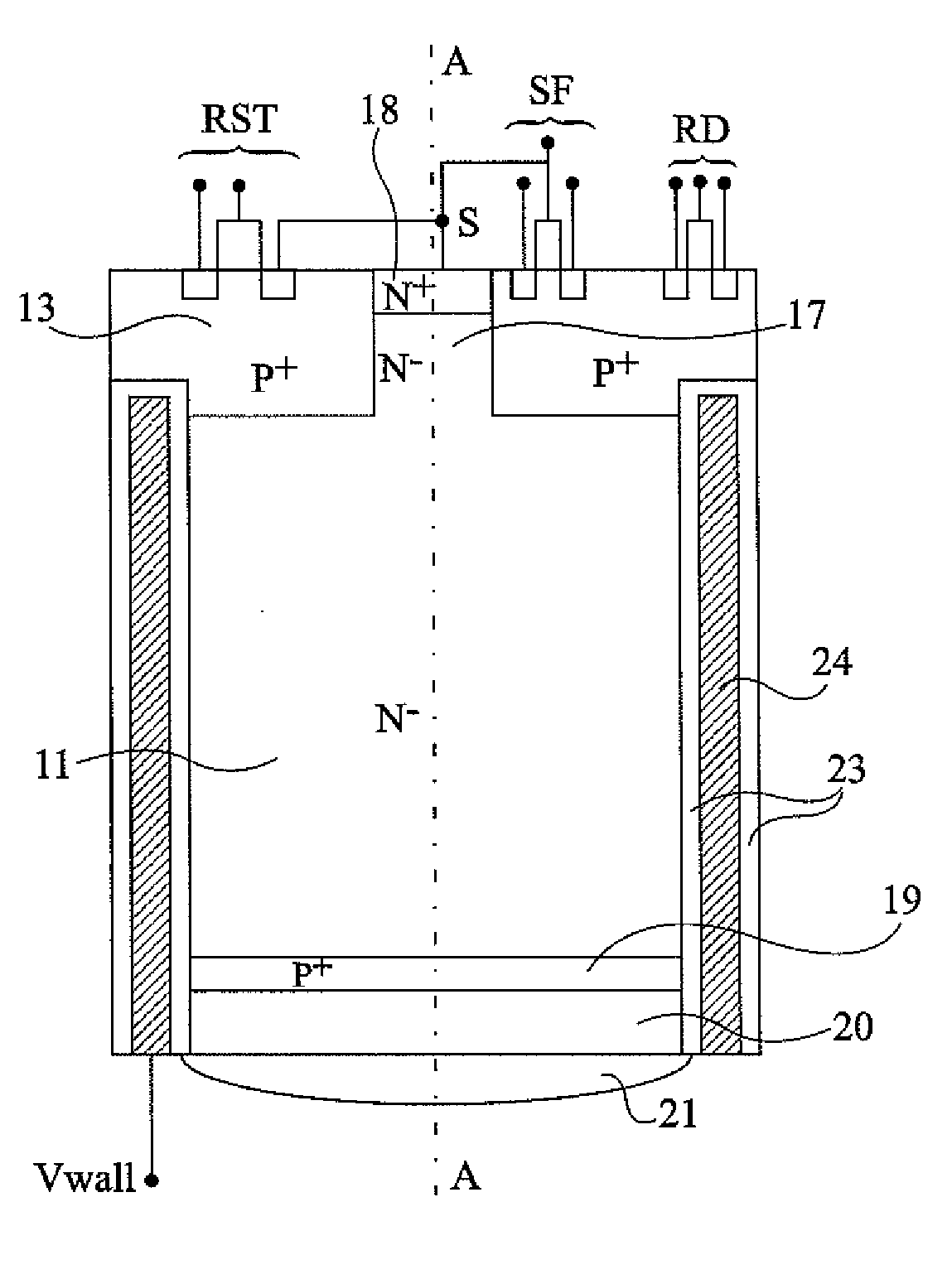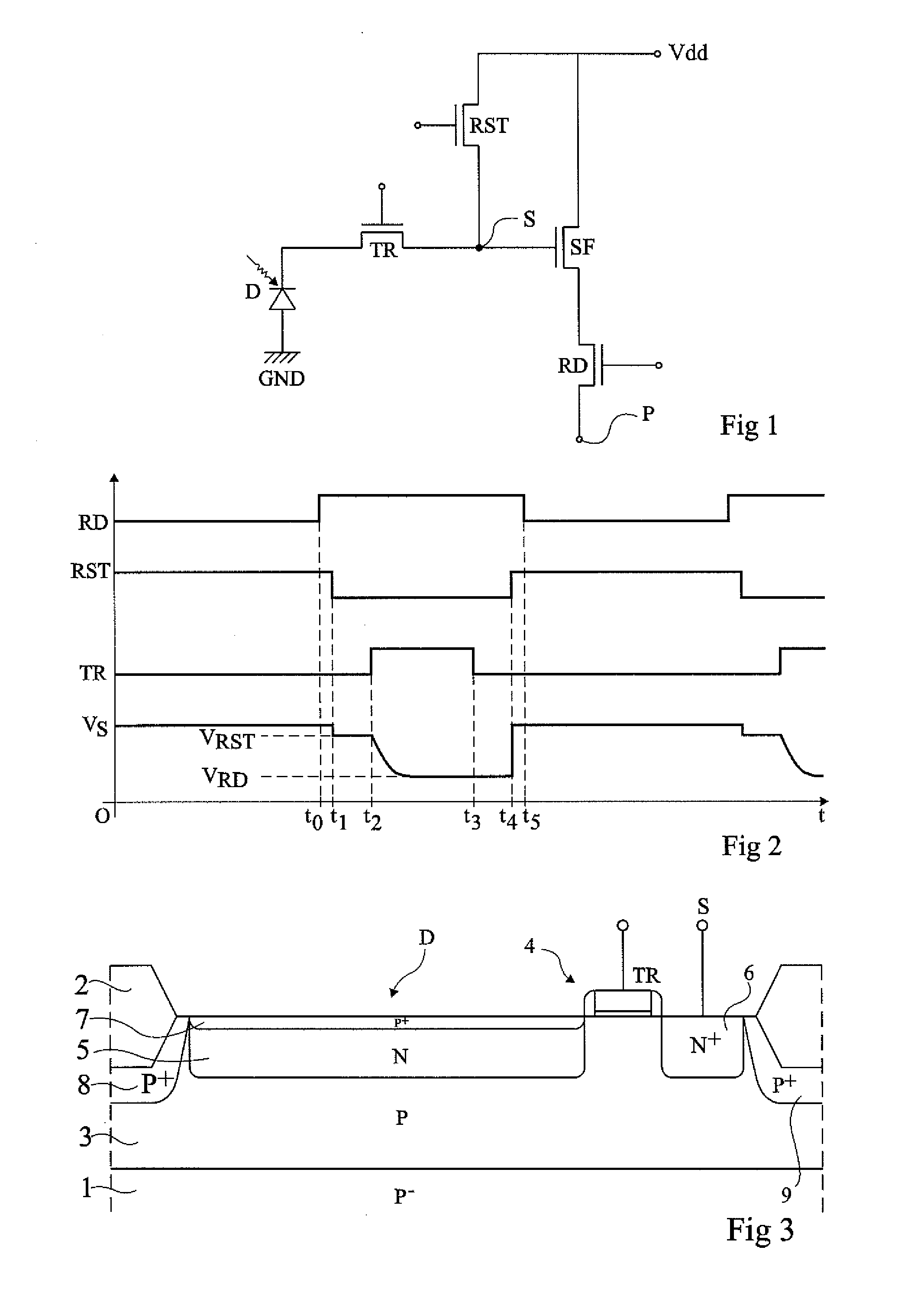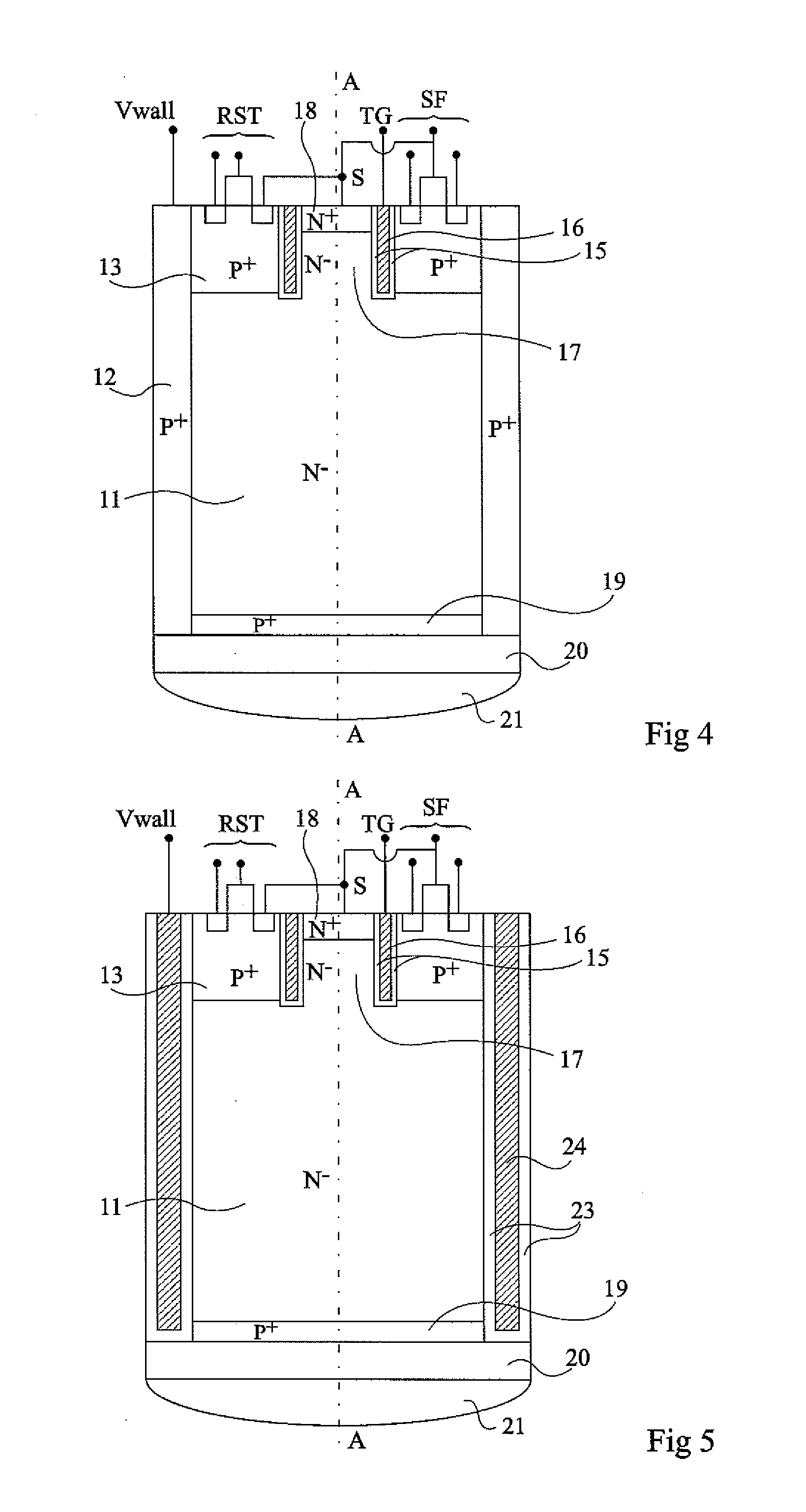Backside illumination semiconductor image sensor
a semiconductor image sensor and backside illumination technology, applied in semiconductor devices, diodes, radiation control devices, etc., can solve the problems of charge collection, general disturbance of precharge level vsub>rst/sub>, limited useful photoconversion surface area, etc., to improve the collection of charges generated and high charge storage level
- Summary
- Abstract
- Description
- Claims
- Application Information
AI Technical Summary
Benefits of technology
Problems solved by technology
Method used
Image
Examples
second embodiment
[0044]FIG. 5 is a cross-section view of an image sensor cell. In FIG. 5, the same elements are designated with the same reference numerals as in FIG. 4. The main difference between the cells of FIGS. 5 and 4 is that the insulating wall surrounding the cell is formed of a trench filled with a conductor 24 surrounded with an insulator 23 instead of being a P-type region. Conductor 24 is connected to a terminal Vwall.
[0045]The cells of FIGS. 4 and 5 operate similarly. In both cases, a phase of photoconversion or integration during which the rear surfaces are illuminated and electrons are stored in body 11 is distinguished from a transfer phase during which the electrons are transferred from body 11 to layer 18 and to read node S.
[0046]During the integration phase, the conduction between semiconductor body 11 and heavily-doped N-type region 18 is interrupted by an action on control terminal TG coupled to insulated conductive region 16. Indeed, if electrode TG is set to a negative voltag...
third embodiment
[0053]FIGS. 7 and 8 show two variations of a The embodiment of FIG. 7 is similar to that of FIG. 5 and the same elements have been designated with the same reference numerals. The main difference is that in the embodiment of FIG. 7, grid 15-16 for closing the neck is absent. In this embodiment, during the integration phase, terminal Vwall is set to a strongly positive voltage to create a potential well in body region 11 and thus store the electrons within insulating walls 23. In a plane perpendicular to axis A-A, the electrostatic voltage of body region 11 is maximum along axis A-A and minimum at the level of insulating walls 23. The electrostatic voltage of P+ layer 19 is controlled by the amount of holes stored in this area. For a voltage of layer 19 smaller than the voltage at the level of walls 23, it is possible to store holes. This lack of holes will be compensated by addition of holes originating from the photocurrents. For a layer voltage 19 which tends to be greater than t...
PUM
 Login to View More
Login to View More Abstract
Description
Claims
Application Information
 Login to View More
Login to View More - R&D
- Intellectual Property
- Life Sciences
- Materials
- Tech Scout
- Unparalleled Data Quality
- Higher Quality Content
- 60% Fewer Hallucinations
Browse by: Latest US Patents, China's latest patents, Technical Efficacy Thesaurus, Application Domain, Technology Topic, Popular Technical Reports.
© 2025 PatSnap. All rights reserved.Legal|Privacy policy|Modern Slavery Act Transparency Statement|Sitemap|About US| Contact US: help@patsnap.com



